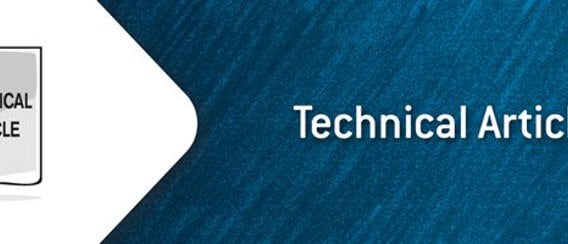EtherSAM: The New Standard in Ethernet Service Testing—Part 2
This article takes an in-depth look at the numerous benefits of EtherSAM—the new ITU-T draft standard for turning up, installing and troubleshooting Ethernet-based services—which was presented in Part 1 of this article.
Benefits of EtherSAM (Y.1564)
EtherSAM provides numerous benefits to service providers offering mobile backhaul, commercial and wholesale Ethernet services.
Measurement of All KPIs in a Single Test
While existing methodologies like RFC 2544 only provide the capability to measure the maximum performances of a link, EtherSAM uses a validation approach where KPIs are measured and compared to expected values for each service. This approach focuses on proving that KPIs are met while in guaranteed traffic conditions.
|
|
RFC 2544 |
EtherSAM |
|
Throughput |
There is no distinction between committed and excess traffic. |
EtherSAM clearly tests at the CIR and ensures that KPI performance is met at all times during the process. |
|
Frame Loss |
Frame loss assessment is based on rate distribution, meaning that frames are generated at specific intervals of transmission rates. |
Frame loss is constantly assessed during the committed phase, ensuring that any loss is quickly identified. |
|
Frame Delay |
Frame delay is based on the measurement of a single frame during a test time. This approach does not take into account any variation or peak that can occur during a long test time. |
EtherSAM measures latency on all generated frames and provides the peak latency and average latency during the committed range. |
|
Frame Delay Variation |
RFC 2544 does not measure this KPI. Another test must be performed to measure this critical KPI for real-time traffic. |
EtherSAM automatically measures this KPI during the committed phase, ensuring that real-time services are prioritized and forwarded within specs. |
Significantly Faster
The RFC 2544 methodology uses a sequential approach where each subtest is executed one after the other until all have been completed, making it a time-consuming procedure. Additionally, the completion of a subtest relies heavily on the quality of the link. If it experiences many events that cause frame loss, test time dramatically increases. This approach introduces inconsistent delays in the test process as there is no clear way to determine how long a subtest will last. Furthermore, the RFC 2544 subtest cycles through a distribution of frame sizes with each frame size, which increases the total test time.
In opposition, EtherSAM uses a defined ramp-up approach where each step takes an exact amount of time. Because a pass/fail condition is based on KPI assessment during the step, link quality issues are quickly identified without necessarily increasing test time. Each step can be configured from 1 to 60 seconds with a default of 5 seconds.
This approach is much more efficient because it produces valid results in a very short amount of time compared to the RFC 2544 algorithm.
Test time gain is easily proven. In tests comparing RFC 2544 and EtherSAM with equivalent test configuration for a single service, RFC 2544 takes 20 minutes to complete a throughput/latency cycle, while EtherSAM takes 25 seconds to complete the network configuration test, which provides more KPI statistics. This represents a 98% test time gain.
Here is a comparison of the RFC 2544 throughput methodology and the EtherSAM service test for a similar service:
|
Trial |
Tx Rate |
Pass/Fail |
|
1 |
100% |
Fail |
|
2 |
80% |
Fail |
|
3 |
40% |
Pass |
|
4 |
60% |
Pass |
|
5 |
70% |
Pass |
|
6 |
75% |
Pass |
|
7 |
77.5% |
Fail |
|
8 |
76% |
Fail |
|
9 |
75% |
Pass |
|
Validation |
75% |
Pass |
|
Trial |
Tx Rate |
Notes |
|
1 |
50% CIR |
Green traffic |
|
2 |
75% CIR |
|
|
3 |
90% CIR |
|
|
4 |
CIR |
|
|
5 |
EIR |
Yellow traffic |
|
6 |
Overshoot |
Red traffic |
|
Method |
Test Time per Frame Size |
Test Time for Seven Standard Frame Sizes |
|
RFC 2544 |
10 x 5 seconds = 50 seconds |
50 x 7 = 5 minutes 30 seconds |
|
EtherSAM |
6 x 5 seconds = 30 seconds |
30 x 7 = 3 minutes 30 seconds |
Multiservice Capabilities
As described earlier, the majority of Ethernet services deployed today include multiple classes of service within the same connection. For example, 3G mobile backhaul services typically comprise four classes of service while 4G LTE backhaul has seven. A major drawback of the RFC 2544 is the fact that it can only test a single service at a time. This implies that the RFC 2544 test must be rerun for all services during a configuration test. Combining the need to repeat the test per distribution with the time it takes to complete a single cycle, RFC 2544 inefficiently increases test time.
In opposition, EtherSAM individually cycles through the different services, providing quick assessment of the network configuration. This dramatically reduces the total test time of multiple services. In a typical three-service test scenario, the total RFC 2544 test takes around one hour while the same assessment with the same frame size via EtherSAM takes nine minutes.
|
RFC 2544 |
20 minutes per service |
60 minutes for three services |
|
EtherSAM Network Configuration |
3 minutes per service |
10 minutes for three services |
More Representative of Real-Life Conditions
The worst-case scenario for a network is handling multiple traffic types during a congestion period. During these high-stress conditions, network equipment must perform prioritization according to the configured SLA. Since RFC 2544 only tests a single stream at a time, meaning that each service is tested individually, it cannot simulate worst-case scenarios.
The EtherSAM service subtest can generate all configured services at the same time, providing the ability to stress network elements and data paths in worst-case conditions. The service test provides powerful test results since all KPIs are measured simultaneously for all services with clear pass/fail indication as well as identification of failed KPIs. This ensures that any failure or inconsistency is quickly pinpointed and reported, again contributing to an efficient and more meaningful test cycle.
EtherSAM Test Scenarios
EtherSAM can be used for a number of test applications:
|
|
Purpose |
Benefits of the EtherSAM Methodology |
|
Lab/Production |
- Testing new equipment before deployment |
- The network configuration test quickly determines if the new equipment or the configuration change is performing as expected for each service. |
|
Service Turn-Up |
- Validating SLA before turning up a service |
- EtherSAM testing ensures that services are correctly configured before turn up, when the available testing window is at its minimum. |
|
Troubleshooting |
- Resolving service tickets or customer complaints |
- EtherSAM can be used as a troubleshooting tool to quickly identify what service/KPI is failing on a link. |
Loopback Test Scenario
The simplest EtherSAM test scenario is the loopback test, where EtherSAM testing is performed from test devices to loopback points located in key locations. The loopback ecosystem includes three elements.
Centralized Test Points
These test points, such as EXFO’s RTU-310/310G IP Services Test Heads, are typically located at fixed test points such as the central office and data centers. They provide centralized access to test capabilities.
Portable Test Equipments
These portable test devices, such as the FTB-8510B Gigabit Ethernet Test Module, FTB-8510G 10 Gigabit Ethernet Test Module and FTB-8130NGE Power Blazer Next-Generation Multiservice Test Module, provide powerful testing capabilities either in the field or at customer sites.
Loopback Devices
Loopback devices offer responder capabilities to complete round-trip testing. These devices, which provide wire-speed capabilities and perform address swapping to maintain integrity in the network, include:
- Dedicated loopback points such as EXFO’s ETS-1000L Ethernet Loopback Device
- Network interface devices (NIDs) such as the RAD ETX
- Portable devices with loopback capabilities such as EXFO’s AXS-200/850 Ethernet Test Set
Bidirectional (Dual Test Set) Test Scenario
The dual test-set approach is a more accurate test scenario. In this case, two units perform an asymmetrical SLA measurement, providing EtherSAM results per direction. This scenario’s main strength is that it quickly pinpoints which direction has not been configured properly or is at fault while providing performance metrics per direction.
Results from both directions are sent and displayed on the local unit. This ensures that the entire test routine can be completed by a single person in control of a single unit, providing shorter test time and reduced manpower. This flexibility also guarantees that different units can be set as a remote unit. The most interesting scenario is a centralized unit that is always configured as a remote unit with fixed addresses. The carrier can simply dispatch a single test person at a test site and the tester can quickly discover and execute service turn-up and burn-in efficiently and quickly without requiring an extra worker in the central office.
The dual test-set approach also provides the capability to segment the network and quickly pinpoint in which direction issues occur. This is especially important where bandwidth is different between the upstream and downstream direction. In such a case, using a loopback tool will always yield the same results since the measurement will be affected by the lowest throughput, and test results will not show that one direction has higher performance than the other. The same scenario will occur if a network misconfiguration is present in only one direction of the service. Depending on the error, the problem will not be identified with round-trip measurements. This often results in customer complaints and additional truck rolls. With the dual test-set approach, both directions are independently analyzed at the same time and pass/fail results are provided per direction, yielding in the highest level of confidence in service testing.
This test scenario requires two test units, which can include:
- Centralized test points: These instruments, such as EXFO’s RTU-310/310G IP Services Test Heads, are typically located at fixed test points such as central office and data centers; they provide centralized access to test capabilities.
- Portable test instruments: These portable test devices, such as the FTB-8510B Gigabit Ethernet Test Module, FTB-8510G 10 Gigabit Ethernet Test Module and FTB-8130NGE Power Blazer Next-Generation Multiservice Test Module, provide powerful testing capabilities either in the field or at customer sites.
Carriers and service providers face the constant challenge of ensuring the proper delivery of services to customers. Ethernet services need to be delivered to customers in compressed time frames while proving to be more reliable than ever. The original method of assessing performance via RFC 2544 no longer provides them with the tools they need to turn-up and troubleshoot with high confidence the new services required by their customers.
EtherSAM bridges the gap between service validation and performance assessment, by providing an intuitive and easy approach to confidently control and manage their networks while reducing OPEX and growing revenues. EtherSAM is the only standard test methodology that allows complete validation of SLAs in a single, significantly faster test while offering the highest level of accuracy.




